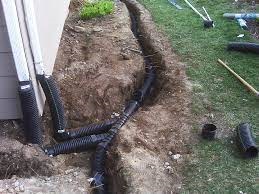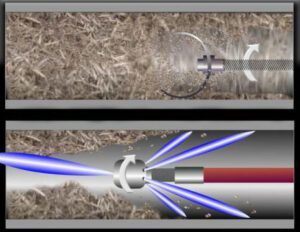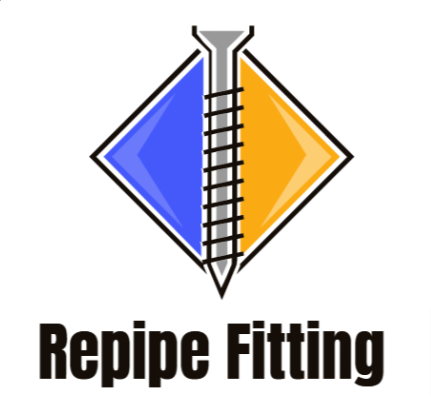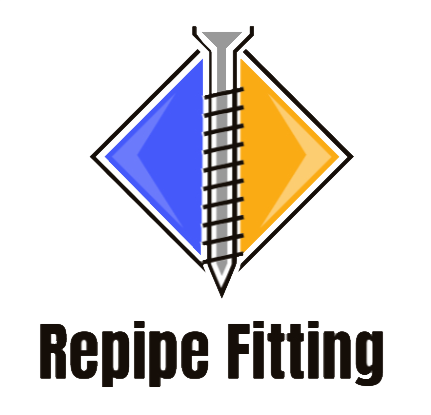Underground drains play a pivotal role in safeguarding your home from potential water damage. They connect to your home’s gutter downspouts, directing water away from your home’s roof and foundation. Ensuring these drains remain unclogged is essential for the longevity and safety of your home.

Importance of maintaining clear gutter drain pipes
Underground drains are crucial for several reasons. They prevent water from pooling close to your house, which can lead to water damage, mold growth, and other issues. Over time, water pooling can erode your foundation’s stability, leading to significant structural problems. Thus, maintaining clear gutter drain pipes is not just about preventing clogs; it’s about preserving the integrity of your home.
Common causes of clogged underground drain system
Clogs in gutter drain pipes can arise from various sources. Leaves, debris, renegade frogs, and even tree roots can block the flow of water. Additionally, external factors like vehicles driving over lines or shifting earth can damage or crush the pipes, leading to blockages.
Step-by-Step Guide to Unclogging gutter drain pipe
Step 1: Visual Inspection
Using a borescope camera
A borescope camera can be a valuable tool for inspecting underground drains. It provides a clear view of the inside of the pipes, allowing you to identify blockages or damages.
Identifying which drains need attention
Signs that your underground drain might be clogged include water pooling around your home, moisture seeping into your basement, and overflowing gutters. During the rainy season, it becomes easier to spot these issues. If you notice water gushing back outside the drainage pipe or spilling outside the adapter seams, it’s a clear indication of a clog.
Step 2: Detach Drains

Removing drains from the bottom of the downspout
To address issues near the foundation entrance or adapters, professionals might need to detach the bottom strap that keeps the downspout in place. This step is crucial, especially if there’s damage near the foundation, as it can lead to more severe problems.
Step 3: Water Hose Setup
Attaching the water hose
One common method professionals use to unclog pipes is by using a water jet stream. They’ll disconnect the underground drain system, remove any visible clogs, and then use a water jet to clear out the remaining blockage.
Filling the buffer tank
The buffer tank ensures a continuous supply of water for the jet stream, allowing for effective unclogging.
Step 4: Prepare High-Pressure Lines
Uncoiling the high-pressure line
Before you begin, it’s essential to uncoil the high-pressure line. This ensures that there are no kinks or obstructions that could hinder the water flow. Lay out the line in long loops to avoid any tangling.
Setting up the sewer-jetter line in ‘long loops’
When setting up the sewer-jetter line, it’s crucial to lay it out in long loops. This prevents any potential tangling and ensures a smooth flow of water, essential for effective unclogging.
Step 5: Jetter Tip Placement

Placing the jetter tip 1-2 ft. inside the drainage pipe
Insert the jetter tip about 1-2 feet inside the drainage pipe. This positioning ensures that the high-pressure water targets the clog directly, maximizing the effectiveness of the unclogging process.
Safety precautions to avoid getting sprayed or hit by debris
Always wear safety glasses and gloves when working with high-pressure lines. The force of the water can cause debris to spray back, potentially causing injury. Ensure you stand to the side of the drain opening to avoid any unexpected splashes.
Step 6: Clearing Blockages
Feeding the line through the pipe
Slowly feed the high-pressure line through the pipe. As you push the line further into the drain, the water’s force will start to break up the clog.
Using a back-and-forth tugging motion
Once you feel resistance, use a back-and-forth tugging motion with the line. This action helps to dislodge stubborn blockages and ensures a thorough cleaning of the pipe.
Step 7: Jetter Tip Daylighting
Slowly pulling the jetter line back
After you’ve cleared the blockage, slowly pull the jetter line back, maintaining the water flow. This action helps to wash away any remaining debris and ensures the pipe is entirely clear.
Maintaining water flow during the process
It’s essential to maintain a consistent water flow during the entire process. This continuous flow ensures that all debris is flushed out of the pipe, preventing potential future blockages.
Step 8: Reverse Direction Cleaning
Feeding the jetter in the reverse direction if needed

If you suspect there might still be some blockages, you can feed the jetter in the reverse direction. This action ensures that the pipe is thoroughly cleaned from both directions.
Ensuring the pipe exit is clear and water can flow freely
After you’ve finished cleaning, check the pipe’s exit point. Ensure that water can flow freely and that there are no remaining blockages.
Tools and Equipment
Every professional plumber knows that having the right tools and equipment is crucial for a successful job. When it comes to unclogging gutter drain pipes, there are specific tools that can make the process smoother and more efficient.
Borescope camera for visual inspection
A borescope camera is an essential tool for inspecting underground drains. This camera allows you to get a clear view inside the drain pipe, helping you identify the exact location of the clog. By pinpointing the blockage, you can target your cleaning efforts more effectively.
High-pressure water hose and buffer tank
Using a high-pressure water hose can be a game-changer when dealing with stubborn clogs. The force of the water can break up even the most resilient blockages. Pairing this with a buffer tank ensures that you have a continuous supply of water, making the cleaning process seamless.
Sewer-jetter line and jetter tip
The sewer-jetter line, combined with a specialized jetter tip, delivers a powerful stream of water that can dislodge debris and clear out clogs. This equipment is especially useful for more extensive drainage systems or when dealing with long-standing blockages.
Safety Precautions
Safety should always be a top priority. When working with high-pressure water and specialized equipment, there are specific precautions you should take to ensure your safety and the safety of those around you.
Wearing protective gear

Always wear safety glasses, gloves, and protective clothing. This gear will protect you from any debris that might spray back during the cleaning process. It’s also a good idea to wear waterproof boots to keep your feet dry.
Avoiding direct contact with reverse jets
When using high-pressure water, there’s a risk of water jetting back towards you. Always stand to the side of the drain opening and ensure that the jetter tip is correctly placed to minimize this risk.
Being cautious of flying debris during the process
As you break up clogs, debris can become dislodged and fly out of the drain. Be aware of your surroundings and ensure that the area is clear of any bystanders.
Conclusion
Importance of regular maintenance
Regular maintenance of your gutter system can prevent clogs and ensure that water flows freely away from your home. By scheduling routine inspections and cleanings, you can avoid the hassle and potential damage caused by blocked drains.
Benefits of a clog-free gutter drain pipe
A clog-free gutter drain pipe not only protects your home’s foundation but also prevents water damage, mold growth, and other related issues. By ensuring that your gutter system is in top condition, you’re investing in the longevity and health of your home.

